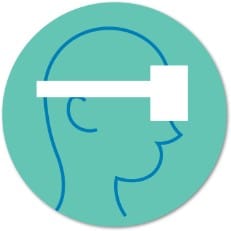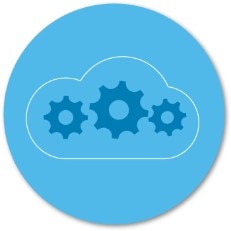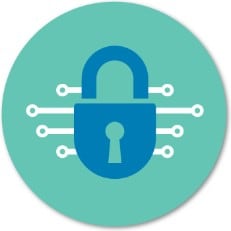Analysis

Technology Trends 2016: Innovating in the digital era
A public sector perspective
Many of the digital technologies fueling innovation today are leading to improved user experience, process transparency, and instantaneous access to information, transforming “business as usual” to the art of the possible. Our newest public sector Technology Trends report delves into innovative and disruptive technology trends facing government. From augmented reality to the Internet of Things, as well as exponential technologies like robotics and quantum computing, our exploration of eight trends will help public sector organizations explore opportunities to harness these technologies to refocus, revitalize, and reimagine the future of government.
Innovating in the digital era
Mobile, social, cloud, analytics, the Business of IT; these macro forces are behind many of the digital technologies that are fueling innovation today. Rooted in these forces, technologies such as augmented and virtual reality, the Internet of Things, industrialized analytics, and autonomic platforms have the power to potentially reshape and transform every corner of the public sector.
Over the next 18–24 months, each of the eight tech trends has the potential to disrupt the way that the public sector thinks about operating and delivery models. We seek to shed light on the anticipated level of public sector relevance and readiness for each trend, with an acknowledgment that government organizations are different, broad, and complex. Our insight also provides real world examples and some tips to help leaders get started. We hope that the ideas contained herein inform and guide your thinking, helping you explore practical ways to do familiar things differently and ways to do fundamentally different things.

Discover each of the 2016 technology trends
Eight technology trends facing public sector
Click each trend below to be taken directly to the details or scroll down to learn more about all eight trends.
 |
Right-speed IT There is an inherent tension between stability and agility in IT. Organizations are evolving different delivery models to span the continuum from high-torque enterprise IT and high-speed innovation. |
 |
Internet of Things: From sensing to doing From “smart cities” to the military, the public sector is capitalizing on the ever-expanding universe of connected “things”. But the real potential is unlocked when data are actionable and new approaches to data management and mission delivery models are considered. |
 |
Augmented and virtual reality go to work AR and VR, technology that delivers context and immersion, have tremendous potential to retool training environments, improve communication, redefine the role of field service workers, and reshape government business processes. |
 |
Reimagining core systems CIOs face enormous pressure to maintain core systems while also investing in emerging digital technologies. But what if those same legacy systems have the potential to become the foundation for driving innovation? |
 |
Autonomic platforms Autonomic platforms transform infrastructure to be more intelligent, repeatable, and scalable through virtualization, containers, and the cloud. IT delivery becomes more automated, helping employees focus on higher-value tasks. |
 |
Blockchain: Democratized trust Developed as part of Bitcoin, blockchain uses cryptography to store and verify information in a secure shared ledger without a governing central authority. Public sector adoption is nascent, but use cases exist that could drastically improve efficiency, costs, and reliability. |
 |
Industrialized analytics Industrialized analytics represent a tremendous opportunity, but require innovative delivery models, new technical platforms, and novel governance tactics. These larger-scale data efforts can allow repeatable results and scale that can truly transform public sector entities. |
 |
Social impact of exponential technologies Beyond efficiencies that exponential technologies like AR and robotics can help achieve, they also have the potential to drive positive social impact. The public sector has the opportunity to take the lead in developing public-private consortiums to take on the world’s toughest challenges using these technologies. |
Right-speed IT
 |
Relevance: How impactful would it be if the public sector adopted the trend? |
 |
Readiness: How ready is the public sector to adopt the trend? |
Right-speed IT seeks to find harmony in the inherent tension between stability and agility in IT. Organizations are evolving different delivery models to span the continuum from high-torque enterprise IT and high-speed innovation. Balancing can no longer be a “one size fits all” approach. Forward thinking public sector CIOs seek to distribute innovation, agility, and DevOps experience more evenly across teams and build capabilities to support a continuum of speeds, dialing in the right approach for varying business needs. The public sector is starting to explore aspects of right-speed IT, but may face various hurdles including existing procurement processes, budget cycles, and talent pools.
Trends in action
One of the ways the public sector is experimenting with aspects of right-speed IT is by taking modular approaches to IT development, transitioning from large, long-term contracts to a shorter acquisition cycle and using rapid, incremental development methodologies. State MMIS and child welfare systems around the country are taking this modular approach. A prime example is the state of California. The state is revamping its child welfare system’s services—the largest in the country—one at a time, using a phased set of RFPs. Development will happen using agile methodologies, and user testing will help determine which processes and functionality roll out in the new system as legacy applications are retired.1
Getting started
- Build a coalition of the willing. Changing established procedural, organizational, and technical approaches may prove difficult, especially in government. Be mindful of what currently drives change within your organization. Know the drivers, and recruit fellow change agents everywhere inside and outside your organization (including IT, the business, contracting/procurement, oversight bodies, and outside agents).
- Be flexible. Your plan will likely need to change. You may need to tap non-traditional resource pools, work with your detractors, and be willing to take a step back to take two forward.
- Start small. Until new behavior becomes the norm, strategically establish pilots and celebrate every victory. The ability to absorb organizational change is a muscle that needs conditioning.

Internet of Things: From sensing to doing
 |
Relevance: How impactful would it be if the public sector adopted the trend? |
 |
Readiness: How ready is the public sector to adopt the trend? |
The universe of connected “things”—and the volumes of data produced—is expanding at a breakneck pace. From “smart cities” to the military, the Internet of Things (IoT) has myriad applications to public sector and has already proven to be transformative. IoT’s potential is particularly profound when data is made actionable and new approaches to data management and mission delivery models are considered.
Trends in action
Both Idaho and Pennsylvania are using sensors and cameras to constantly monitor road and weather conditions. Using sensors built into the roads, roadside towers, or even in snowplows, data regarding road conditions such as the friction levels on pavement are fed directly to crews out on the roads.2 The crews can then monitor salt and sand usage rates and adjust application levels in real-time.3
Getting started
- Start small and iterate. Pilot or prototype a high-impact use case. This may allow you to iterate and experiment, truly measure the net impact, and take advantage of ever-expanding IoT technological improvements. As business cases are refined, you can scale to the enterprise.
- Use what you have. There’s no need to reinvent the wheel. Consider leveraging previous work or advances that have been made in the public or private sectors for your IoT initiative. Activating and connecting existing infrastructure may allow you to leapfrog some implementation steps.
- Consider implications. Consider the longer-term policy and privacy implications. Establishing appropriate protocols to ensure connectivity, public safety, cybersecurity, and fairness will be a complex undertaking, but essential for future success.

Augmented and virtual reality go to work
 |
Relevance: How impactful would it be if the public sector adopted the trend? |
 |
Readiness: How ready is the public sector to adopt the trend? |
Augmented reality (AR) and virtual reality (VR) are no longer science fiction. The technology is here, and its benefits to the public sector has tremendous potential to reshape business processes, improve communication, retool training environments, or redefine the role of field service workers through immersion or adding context to the environment. The military, law enforcement, and national security agencies have been early adopters, using AR and VR to replace expensive field exercises, overlay information for the connected warrior, and to assist with threat identification. The use cases are equally powerful for the civilian sector.
Trends in action
The National Aeronautics and Space Administration (NASA) is using both AR and VR to better acclimate astronauts to the specific environments and conditions they might experience while in space, as well as train them on potential required actions, like repairing the exterior of the International Space Station. They are also experimenting with wearable glasses that allow users to interact with holograms, facilitating enhanced communication between astronauts and ground teams.4 NASA is also thinking about ways to bring the unique space experience to the general public. 2016 was the agency’s first time at the Consumer Electronics Show, where they provided attendees a virtual ride aboard an Orion spacecraft.5
Getting started
- Pilot high-value use cases. Start with a use case around a single purpose that will create measureable value and tremendous impact. There are hundreds of use cases for public sector. Consider the uses for the bridge inspector or the case worker, for example.
- Be the beta. Leading public sector organizations may be able to capitalize on the volatile AR/VR market. Until dominant players emerge, AR and VR vendors may be more willing to lower price points and team up with leading organizations to further develop their products.
- Experiment and educate. Given that these tools are brand new, accept that experimentation and education is essential to help everyone to understand the application and valuable benefits.

Reimagining core systems
 |
Relevance: How impactful would it be if the public sector adopted the trend? |
 |
Readiness: How ready is the public sector to adopt the trend? |
Decades-old legacy and ERP systems are at the heart of mission and back office government office processes. However, taxpayer expectations for ease of use, transparency, and efficiency have risen dramatically in the Internet age. Cloud, sensors, and virtual reality are changing missions and businesses. As those changes progress, CIOs face enormous pressure to maintain core systems while also investing in emerging digital technologies. What if those same legacy systems have the potential to become the foundation for driving innovation? Monolithic thinking is out. Nuance is in.
Trends in action
To enhance customer experience, Amtrak is modernizing its 40-year old pricing, scheduling, and ticketing system with new mobile and digital capabilities. Rather than a wholesale “rip-and-replace,” Amtrak is meeting these changing demands through a transformation of its existing core platforms.6
Getting started
- Know your business case. Whether it’s an aging workforce, mounting technical debt, or the growing inability to meet demands in the digital age, modernizing core systems requires a clear business case.
- Plan it out. Core systems are deeply rooted in the public sector, entrenched in well-established business processes and procedures and decades of intellectual capital. Assessing and respecting that foundation while driving toward innovation requires patience, courage, and diplomacy. Incremental approaches are almost invariably required.
- Modernize in place. Tools for automated mainframe code conversion have matured dramatically in the past few years. Don’t discount the ability to “lift and shift” to new technologies and modernize in place.

Autonomic platforms
 |
Relevance: How impactful would it be if the public sector adopted the trend? |
 |
Readiness: How ready is the public sector to adopt the trend? |
Autonomic platforms can transform bottom-up infrastructure and top-down delivery models from labor intensive to intelligent, automated, predictable, repeatable, and scalable. Using a “build once, deploy anywhere” approach, autonomic platforms leverage virtualization, containers, and the cloud. New delivery models can dynamically automate, deploy, and manage resources and move towards a more “laborless IT," so that employees can prioritize higher-value tasks, and large, complex public sector entities can focus more energy on their core missions.
Trends in action
Autonomic platforms are making inroads across the public sector, including data center, server, network, and storage virtualization. For example, the Defense Information Systems Agency (DISA) has been deploying network virtualization across the enterprise to assist with automation, greater network visibility, and performance. Such benefits are crucial to DISA, who supports the warfighter and must rapidly detect and remediate threats.7
Getting started
- Phase it in. Autonomic platforms are at the cutting edge of technology. Recognize that they will take time to evolve and mature. Start somewhere. For example, reinforce and expand your network infrastructure, virtualize the stack, and then automate and integrate the data center.
- Invest in tools. Tools that isolate systems from the underlying infrastructure have matured and are increasingly allowing developers to fulfill the promise of horizontally scalable software.
- Consider DevOps. Autonomic platforms push the boundaries of what we know as a traditional workforce, including the use of robotic process automation. The public sector might not be there yet, but could start to better manage workflow and its workforce through DevOps.

Blockchain: Democratized trust
 |
Relevance: How impactful would it be if the public sector adopted the trend? |
 |
Readiness: How ready is the public sector to adopt the trend? |
Developed as part of Bitcoin, blockchain uses cryptography to store and verify information in a secure shared ledger without a governing central authority. As a potential alternative to centralized governance, blockchain may rewrite notions of transaction, licensing, identity, and contract management. Exploratory efforts are nascent in the public sector; however, regulators should be vigilant, and agencies should recognize that use cases exist that could drastically improve efficiency, costs, and reliability.
Trends in action
Honduras started a pilot to move its public land registry onto a distributed ledger in an effort to prevent illegal record tampering. Records were digitized, encoded with an immutable fingerprint, and then stored on the blockchain. Users can track histories of land titles instantly, but cannot alter anything in the system.8
Getting started
- Get smart. Rooted in computer science and advanced mathematics, blockchain may take some time to fully understand. Learn the what, the how, and most importantly, the why. Education will help reveal the most impactful use cases.
- Role play. Right now, blockchain’s technological advances seem to be outpacing regulation and compliance. The public sector may play an important role here, including acting as governing bodies for public blockchains or creating technology standards and regulatory guidance.
- Keep up with developments. Software providers are currently working to develop ERP and financial management systems based on the principles of blockchain. As those systems mature, it may be useful to evaluate them for their ability to better meet mission needs.

Industrialized analytics
 |
Relevance: How impactful would it be if the public sector adopted the trend? |
 |
Readiness: How ready is the public sector to adopt the trend? |
The public sector have been using data to gain business insights, improve performance, and increase profitability for years. Today, the extraordinary availability of data and the wealth of talent and technologies represent a tremendous opportunity. However, new approaches that consider innovative delivery models, new technical platforms, and novel governance tactics will be required to unlock this opportunity. Rather than “one-off” pilots that offer insights in drips and drabs, industrialized analytics can allow results that are repeatable, scalable, and truly transformative.
Trends in action
Chicago is helping identify potential exposure to foodborne illnesses earlier using an advanced analytics platform that pulls from hundreds of datasets within the city’s open data portal. Three dozen inspectors from the Chicago Department of Health are responsible for checking the city’s 15,000 restaurants for critical violations, many of which deal with improper temperature control for food. Using data from 311 complaint calls, sanitation inspections, and other information like the weather, the analytics platform is able to forecast which of the food establishments are most likely to have critical violations and then guide inspectors to visit those restaurants first. The data-driven inspection approach showed to enable inspectors to discover critical violations an average of seven days earlier.9
Getting started
- Start with the question, not the answer. Begin by asking top leaders and stakeholders “What is the one piece of information that, if you had it, would help to achieve your mission?” This can not only lay out your data analytics “treasure map” to discover where to go and which data are needed, but can also ensure that you are going after something that will bring business value.
- Walk before you run. Industrialized analytics is not merely an exploratory use of data to glean insights. It’s woven into an organization’s strategy and represents a fundamental shift in how business is done. If you are new to analytics, start small, and gradually introduce the use of analytics into different aspects of the organization. And remember when you are trying new things, it is important to embrace failure and fail fast if something isn’t working. If our organizational data were pristine and easy to transform into insight, analytics would be easy. Be willing to redirect energy to easier questions, and come back to the more difficult ones later.

Social impact of exponential technologies
 |
Relevance: How impactful would it be if the public sector adopted the trend? |
 |
Readiness: How ready is the public sector to adopt the trend? |
Exponential technologies such as augmented reality, virtual reality, and robotics have already demonstrated the ability to do work better, cheaper, and faster. Beyond efficiencies, exponentials can drive positive social impact. The public sector has the opportunity to take the lead in developing public-private consortiums to take on the world’s toughest challenges using these technologies.
Trends in action
Robots that swim, fly, or burrow through disaster zones have demonstrated how they can help first responders assess structural damage, clear debris, and assist with search and rescue operations. In the wake of the 2014 Washington State Oso mudslides, the public, private, and philanthropic sectors collaborated to fly drones with advanced sensors over the disaster zone. Drones were able to map the entire area in seven hours, an activity that would have normally taken two to three days, and they kept responders safe in the process.10
Getting started
- Team up. The public sector doesn’t have to get on board with the goals of social impact, philanthropic good, or citizen service. These are core to their mission. The challenge may be adopting the exponential technology that can help expedite the journey and amplify the effect. Work with others—including the private and philanthropic sectors—that may be further down the technology adoption path to help kick start efforts.
- Convene. The public sector is a powerful coordinator and convener. Think about hosting competitions around social problem solving.
- Consider ethical and unintended consequences. Coordinate efforts to consider and understand the ethical and moral implications of exponential technologies beyond traditional risk concerns of security, privacy, regulatory, compliance, safety, and quality.

1 Amanda Ziadeh, “California’s step-by-step solution for its new Child Welfare System,” GCN, February 2, 2016, https://gcn.com/articles/2016/02/02/california-agile-procurement.aspx, accessed April 23, 2016.
2 Ben Miller, “Smarter Road Weather Sensor Networks Offer Better Safety, Forecasting,” FutureStructure, October 16, 2015, http://www.govtech.com/fs/Smarter-Road-Weather-Sensor-Networks-Offer-Better-Safety-Forecasting.html, accessed April 23, 2016.
3 Jennifer Grasswick, “Idaho Transportation Department cuts winter maintenance spending and reduces accidents on icy and snowy roads by over 25 percent,” GlobeNewswire, November 4, 2015, https://globenewswire.com/news-release/2015/11/04/783598/10155187/en/Idaho-Transportation-Department-cuts-winter-maintenance-spending-and-reduces-accidents-on-icy-and-snowy-roads-by-over-25-percent.html, accessed April 23, 2016.
4 Baptitse Grève, “How NASA is Using Virtual and Augmented Reality to Train Astronauts,” Unimersiv, December 21, 2015, https://unimersiv.com/post/how-nasa-is-using-virtual-and-augmented-reality-to-train-astronauts-37/, accessed April 23, 2016.
5 John Gaudiosi, “Why NASA Is Blasting Off at CES for the First Time,” Fortune, January 5, 2016, http://fortune.com/2016/01/05/nasa-ces-first-time/, accessed April 23, 2016.
6 Deloitte University Press. Tech Trends 2016: Innovating in the digital era, Reimaging core systems, p. 54,http://d27n205l7rookf.cloudfront.net/wp-content/uploads/2016/02/DUP_TechTrends2016.pdf, accessed April 23, 2016.
7 John Edwards and Eve Keiser, “DISA evaluates SDN to guard mission-critical networks,” C4ISR & Networks, August 12, 2015, http://www.c4isrnet.com/story/military-tech/it/2015/08/12/disa-evaluates-sdn-guard-mission-critical-networks/31547009/, accessed April 23, 2016.
8 Deloitte University Press. Tech Trends 2016: Innovating in the digital era, Blockchain: Democratized trust, p. 80, http://d27n205l7rookf.cloudfront.net/wp-content/uploads/2016/02/DUP_TechTrends2016.pdf, accessed April 23, 2016.
9 City of Chicago, Food Inspections Forecasting: Optimizing Inspections with Analytics, November 28, 2015, https://chicago.github.io/food-inspections-evaluation/, accessed April 23, 2016.
10 Robin Murphy, “These robots come to the rescue after a disaster,” filmed May 2015. Ted video. https://www.ted.com/talks/robin_murphy_these_robots_come_to_the_rescue_after_a_disaster?language=en#t-134954.